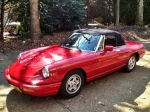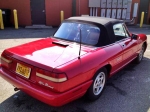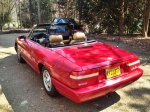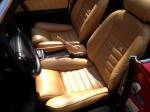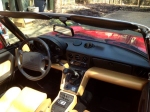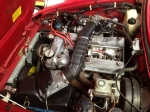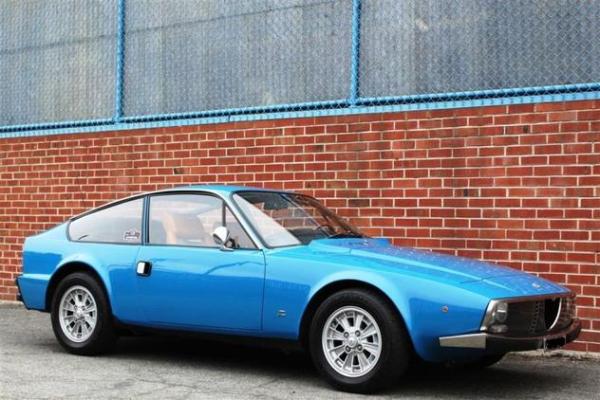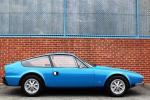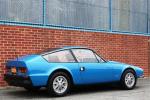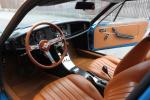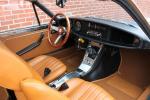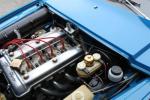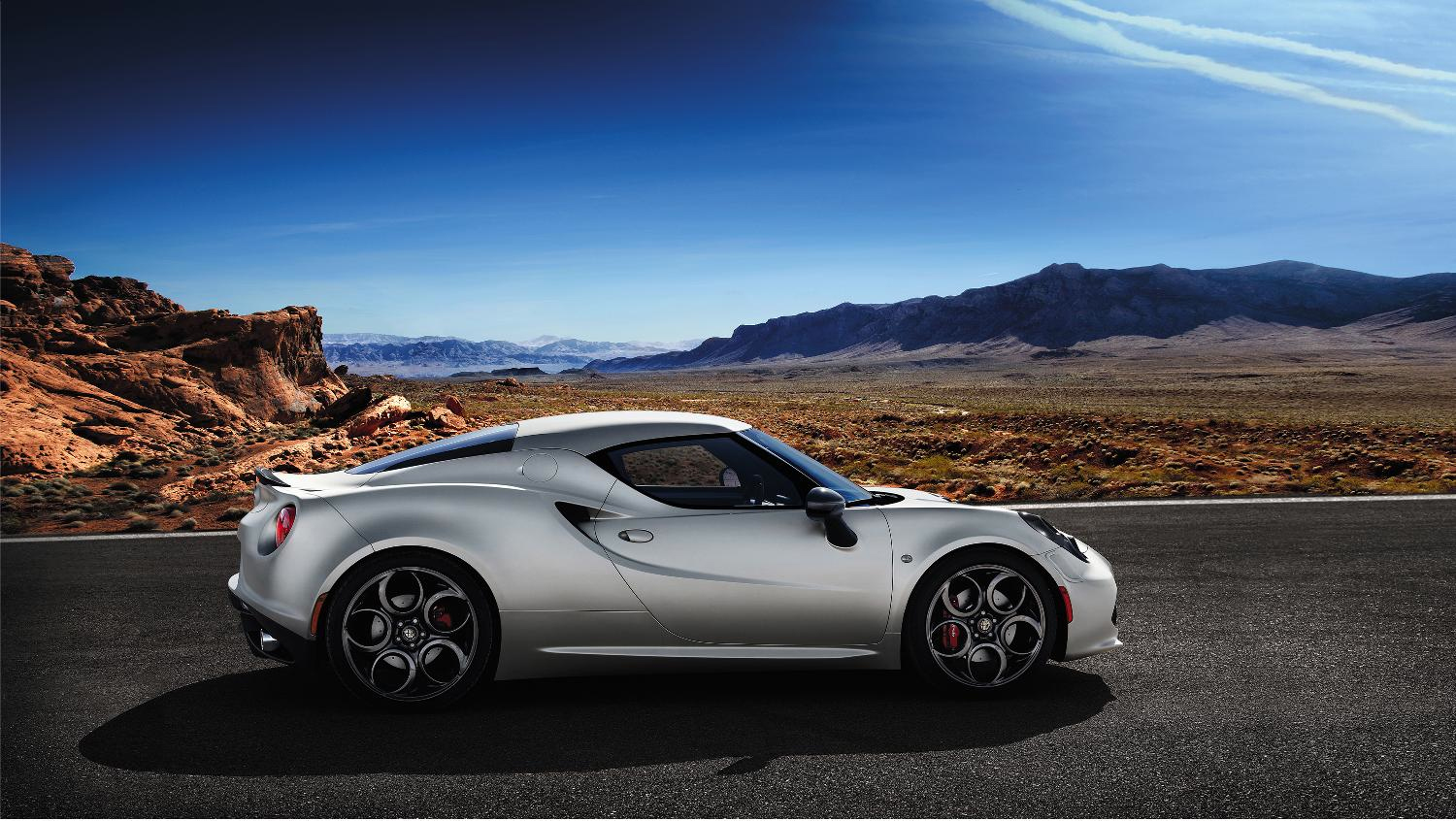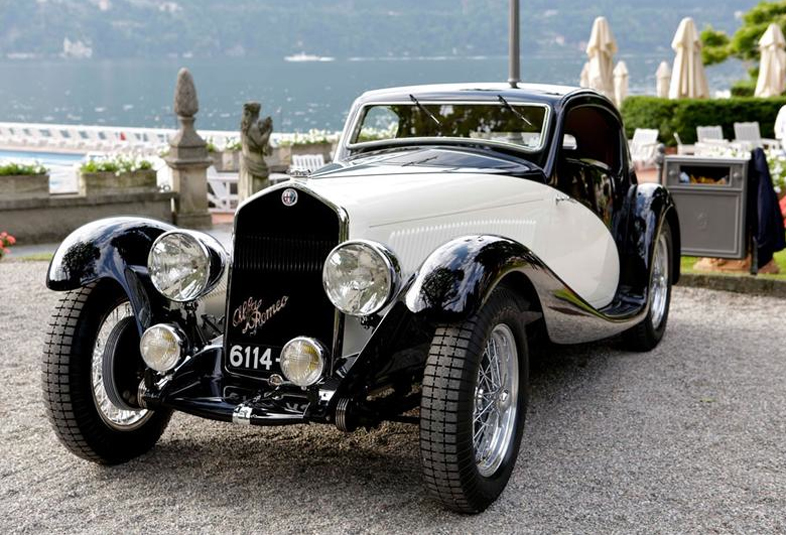Over its 30-year production run, the Type 105 Alfa Romeo Spider captured the essence of La Dolce Vita as no other car before or since. Associated with Italian movie stars and a movie star in its own right—appearing in films like Under The Tuscan Sun, Wayne’s World, Fletch, and of course The Graduate—it was stylish, nimble, sporty, and radiated a spirit of carefree adventure. From the iconic boat-tailed Duetto to the Kammbacks to the more unified design of the final series, they remained more or less unchanged in their appearance, whilst engine choices ranged from the early cars’ twin-cam 1600 to the lively 2.o litre motors with Motronic injection used in the Series 4. These last Spiders, produced from 1990-1994 are the most refined, with wraparound taillights and body-colored bumpers and side moulding, along with the aforementioned Bosch EFI motors that significantly improved reliability and power band, making these the most drivable of the 105s. Even today, they feel as modern as an MX-5 Miata or late Model Honda S2000, yet retain that unmistakable, classical Alfasong exhaust note. While mid-generation Spiders are lingering in the $5-10,000 range, these Series 4s have been escalating and are second only to the Duettos for collectibility. Certainly there are many that were bought for enjoyment and have well over 50,000 miles. This was also the only 105 Spider to offer automatic transmission, so there are some decent examples that can be found in that price range. Guideline examples, with under 50,000 miles, solid history and proper originality, are getting harder to find for under $15K. This 1991 Alfa Romeo Spider looks to be mostly original, with only an aftermarket CD player straying from its factory spec. While not original, the new top and upholstery are factory correct, giving it a fresh appearance without too many points deducted. It is said to have been extremely well-maintained throughout its life, which has seen just under 40,000 miles. For about the same money as a second-hand Miata with similar miles, it’s an investment-quality classic Italian roadster that’s amoré. Find it here on Craigslist in Richmond VA for an attractive $12,000.
Category: Alfa Romeo (Page 3 of 3)
Following the tradition established by previous Alfa Romeo-Zagato collaborations, the Junior Zagato featured unique coachwork on the high performance variant mechanical components from standard production cars. Featuring a dual Weber version of the 1600 powerplant and weighing in at just 2100 pounds despite using aluminum only for the engine lid and doors, the car performed well. Its low center of gravity and rakish lines made the car handle and look much more sporting than the rather square-rigged car on which it was based, and with only 402 1600cc examples built, they are quite rare as well. From 1999 to 2004, the car received an extremely thorough and fastidious restoration. The car was subtly upgraded as well during the restoration, with the fitment of magnesium Campagnolo wheels, Shankle suspension with Koni shocks. The transmission was rebuilt and the engine and Webers were completely rebuilt. A lightened flywheel was installed and the differential was rebuilt with a limited slip. The brakes were completely rebuilt, and all suspension was rebuilt and rebushed. Uprated sway bars were also fitted. High compression Venolia pistons were fitted, along with European 2 liter camshafts, and all rotating parts were lightened and balanced. The cylinder head and headers were carefully polished and matched to one another. This work was completed 9000 miles ago and the car has seen regular maintenance since, including fluid changes, new tires, new motor mounts, and various other minor work to keep the car in top condition. The car comes with an extensive spares package of NOS and good original parts, from consumable mechanical items to exterior trim, lights, antenna components, ventilation components, weatherstripping, filters, interior trim, a spare steel wheel, a set of four like new Carello headlamps with trim rings, and many other items. Find it here on AutoTrader Classics with a tempting price of $23,000
The global launch of the Alfa Romeo 4C marks the return of the brand to the world of lightweight sports coupés, an extraordinary event, awaited ever more eagerly by the host of fans throughout the world. The exclusive ‘Launch Edition’ was created just for them, a numbered limited edition of 400 in Europe with exclusive characteristics developed specifically for this unique version.
It made its début, at the 83rd Geneva International Motor Show, where orders officially opened for the ‘Launch Edition’ of the new 4C compact supercar at a price of 52,000 pounds or 60,000 euros in most European markets (price including VAT net of other local taxes). What’s more, all buyers can take part in an exclusive event which will include an advanced driving course, to learn how to make the most of its potential in complete safety.
The new Launch Edition can ‘clothe’ its body with two liveries – Carrara White or Alfa Red – and is marked out by the distinctive badge, inlaid beneath the paintwork. The line of the special car is enhanced by the carbon aerodynamic kit (including spoiler and door mirror covers), the rear aluminium diffuser with dark finishing, Bi-LED headlights with dark surround and 18″ (front) and 19″ (rear) alloy wheels with burnishing treatment.
To accentuate the sports look still further, there are front air intakes, brake calipers in a specific colour, racing exhaust system with BMC air cleaner and suspension kit with specific calibration for shock absorbers and rear anti-roll bar.
The interior has the same sports feel, with highlights provided by the leather/fabric sports seats with parts in Alcantara, as well as the distinctive, numbered carbon badge. In the case of the red livery, the Alfa Romeo 4C Launch Edition has red stitching on the steering wheel trim, handbrake, mats, handles and sports seats.
Of course, the Alfa Romeo 4C Launch Edition offers all the winning characteristics of the model that represents the essential sportiness embedded in the ‘Alfa Romeo DNA’: Italian style, performance and technical excellence, for maximum driving pleasure in complete safety.
Designed by Alfa Romeo and produced in the Maserati plant in Modena, the new mid-engined rear-wheel drive coupé with two bucket seats will be become available for purchase in 2013 and will mark the return of the Italian brand to the United States, inaugurating Alfa Romeo’s global growth plan.
The Alfa Romeo 4C derives directly from the concept which raised many eyebrows in admiration at the Geneva Show in 2011, so much so that it won three prestigious awards: the ‘AutoBild Design Award’ (2011, Germany), the ‘Design Award for Concept Cars & Prototypes’ (2012, Italy) and the ‘Most Exciting Car of 2013’ – ‘What Car?’ (2013, Great Britain).
Acronym 4C
The acronym ‘4C’ draws its inspiration from the brand’s glorious past, projecting the values of technology and emotions into the future. Indeed, it refers to Alfa Romeo’s great sporting tradition: the acronyms 8C and 6C in the 1930s and 1940s distinguished cars – both racing and non – fitted with the powerful ‘eight cylinders’ and the innovative ‘six cylinders’, confirming in its design layout and construction the goal of achieving the weight/power ratio of an authentic supercar, less than 4 kg/HP, yet focusing not merely on the maximum power delivered, but on limiting the weight to guarantee maximum agility and top performance. To this end, the Alfa Romeo 4C uses state-of-the-art technologies and materials derived from super sports cars (including the Alfa Romeo 8C Competizione) – carbon fibre, aluminium, rear-wheel drive – and technologies from the latest standard models from Alfa Romeo, but updated to enhance the sports appeal of the new car even further. This is demonstrated by the new 1750 Turbo Petrol all-aluminium engine with direct injection, the sophisticated “Alfa TCT” twin dry clutch transmission and the Alfa DNA selector with the brand-new Race mode.
Exterior style
Designed by the Alfa Romeo Style Centre, the 4C immediately brings to mind some of the traditional iconic models which have left a significant mark in the history of the Brand. Above all others, in terms of dimensional and layout similarities, one stands out in particular: the 33 Stradale, a car that combined extreme mechanical and functional requirements with an essential style which “clothed” the engine and chassis appropriately with unmistakable Alfa Romeo treatments.
The 4C has followed suit, and thus completes a journey which was embarked upon with the 8C Competizione, emphasising some particular concepts of the brand, such as compact size, dynamism and agility.
The development of the 4C’s exterior was characterised from the start by the need to enhance the style of the car and the technical characteristics both from a dynamic and aerodynamic point of view. For this reason, all the style solutions adopted have been optimised in accordance with the ultimate goal of the car: performance.
The rear volume, sinuous and enveloping, simultaneously encloses and embraces the beating heart of the car: the mechanics and the engine, visible through the rear window.
All this, thanks to the development of marked musculature above the wheels, lends strength and power to the rear end.
The rear musculature supports its structure on round rear light clusters and on the side air intakes necessary to cool the intercooler and the air intake for engine aspiration.
From this energy-charged rear volume and the two side air intakes spring the two long muscles which lend speed and dynamism to the side, generating the necessary volume at the front end to house the headlights and, on the central part, the two robust ribs running along the bonnet, tracing the unmistakable “V” and coming to their natural conclusion around the shield.
This, together with the two side intakes, forms the famous “Trefoil”, a substantial facet of Alfa Romeo’s profile.
Interior design
The elemental design and essential materials also distinguish the interior, which is all designed and built for maximum driving satisfaction.
Specifically, the carbon fibre of the central cell immediately stands out in the interior, left in full view to enhance the sense of low weight, technology and uniqueness of the car.
The dashboard and door panels have an “asphalt ” treatment to recall the vocation of the Alfa Romeo 4C, conceived to convey maximum driving sensation from the road.
The seats ensure dedicated sports posture, favouring the driver’s contact with the road without, however, compromising the comfort required for everyday use of the car.
The dashboard, simple and designed to make using functions simple too, reaches its zenith in the concept of extreme driver-orientation, thanks to digital instruments and gear shift controls located on the appropriately shaped steering wheel.
The cockpit, which powerfully suggests the world of motorcycle racing and race cars, brings together all information necessary to drive and control the car.
The information, which is rendered captivating through powerful, high-impact graphics, allows the driver to keep everything under control without distractions from controls that would be superfluous on this type of car.
The pedal unit and footboards for driver and passenger are all made of aluminium and embellish the lower part under the dashboard, highlighting sports character down to the smallest detail.
Dimensions and aerodynamics
The compact dimensions make this car with 2 bucket seats truly unique among its competitors: 399 cm long, 200 cm wide, 118 cm high and with a wheelbase of 238 cm. These dimensions serve both to emphasise the car’s “supercar proportions” and to accentuate its agility. What’s more, owing to the designers’ excellent work, the car achieves maximum aerodynamic efficiency levels, guaranteeing a negative Cz which, as in racing cars, contributes towards achieving increased stability at higher speeds thanks to the aerodynamic downforce.
New direct-injection 240 HP 1750 Turbo Petrol engine
The engine is the beating “heart” of an Alfa Romeo. In this case, it’s the new direct-injection 240 HP 4-cylinder 1750 Turbo Petrol, which was designed with a precise objective: to ensure exceptional performance without sacrificing driving fluidity and use in any circumstances, from the racetrack to the city streets. The Alfa Romeo 4C’s new mid-engine, all-aluminium power unit adopts specific optimised intake and exhaust systems, to enhance both response at low speeds and extension, with the assistance of a crankshaft with eight counterweights. In addition, it boasts cutting-edge technical solutions including direct petrol injection, dual (intake and exhaust) continuous variable valve timing, a turbocharger and a revolutionary scavenging control system that eliminates turbo lag. Torque delivery is generous, with a peak of 350 Nm, 80% of which is available at only 1700 rpm.
Alfa TCT twin dry clutch transmission
The 1750 Turbo Petrol engine is teamed with the Alfa TCT twin dry clutch transmission, which is a genuine benchmark in the category due to its limited weight and extreme speed of activation. The gears can be changed in sequential mode using the “shift paddles” located behind the steering wheel. Compared to the version already adopted on the Giulietta and MiTo models, the TCT on the Alfa Romeo 4C implements next-generation software and features the new ‘Launch Control’ function that optimises all car systems to provide the utmost acceleration possible. What’s more, to ensure the best performance in accordance with the road conditions and driving style, the Alfa TCT adopts optimised operating logic, interacting with the Alfa DNA selector, the braking system, the engine management system and the vehicle stability control system. For example, in automatic mode, the shifting logic differs according to the Alfa DNA setting.
The new Alfa DNA selector with ‘Race’ mode
A specific evolution of the Alfa DNA selector has been developed for Alfa Romeo 4C, which not only features the three standard settings available on other models in the range – Dynamic, Natural and All Weather – but also a fourth mode: ‘Race’, designed to enhance the driving experience on a racetrack even further. It only takes a long press of the selector in Dynamic position to activate it: in this mode, the Alfa DNA deactivates the stability control and anti-slip systems, leaving the driver in full, exciting control. Finally, the full-digital instrument panel with TFT display changes configuration – showing only information relevant to the chosen mode – and colour in line with the Alfa DNA setting: yellow for Race, red for Dynamic, grey for Natural and blue for All Weather.
Solid but lightweight structure
A stiff, strong but light structure is an essential pre-requisite for a high-performance sports car. The same principle inspired the creation of the Alfa Romeo 4C. A state-of-the-art combination of hi-tech materials of extraordinary stiffness and strength, together with a very low specific weight, was selected to achieve this result. In particular, the chassis is a monocoque made entirely of carbon fibre with ‘pre-preg’ technology derived from Formula 1 and adopted only by the most advanced supercars, which weighs only 65 kilograms, inside which a space is formed for the driver and passenger. The front and rear structures of the chassis and the roof reinforcements are made entirely of aluminium.
Additionally, the car’s bodywork is made entirely of low-density, high-strength composite material. Benefits of using this material include lighter weight (it is 20% lighter than steel) and resistance to corrosion. Dimensional stability is comparable to steel and better than aluminium.
Finally, the seats have a mixed carbon fibre and fibreglass structure which guarantees high resistance to stresses and a particularly low weight at the same time.
The final result is a significant reduction in overall weight (the dry weight is just 895 kg) combined with the best possible torsional stiffness and strength characteristics, as well as the optimisation of the car’s centre of gravity, which gives the advantage of increased agility and drivability on the most challenging roads.
Suspension
The Alfa Romeo 4C has an extremely sophisticated suspension layout – ‘superimposed wishbones’ at the front, development of MacPherson at the rear – to ensure maximum agility and road holding. This solution, along with the rear-wheel drive and the extraordinary weight to power ratio, ensures Alfa Romeo driving pleasure, enhanced even further by the weight distribution (40% on the front axle and 60% on the rear axle). What’s more, for those wanting the maximum in terms of handling, a complete suspension kit will be available with a specific calibration of the shock absorbers and rear anti-roll bar.
Braking system, wheels and steering
To ensure decisive braking even under the most intensive conditions, the braking system has four self-ventilating perforated discs, with Brembo four-piston aluminium calipers on the front axle. In addition, to “stick” the car firmly onto the road surface, tyres with a different diameter and width depending on whether they are fitted at the front or rear have been fitted (two variants possible, either 17″-18″ or 18″-19″) which were developed especially to guarantee excellent performance (a kit of tyres with a softer mix is also provided for optimised grip). In line with the car’s setup, the steering system of the 4C does not feature power steering, to save weight but above all to secure a superlative driving feel. An appropriate steering wheel load is maintained thanks to the low overall weight of the car.
Real supercar performance
The implemented state-of-the-art technical and technological solutions drive the Alfa Romeo 4C to reach real supercar performance with a unique driving feel. This is demonstrated by a top speed in excess of 250 km/h, only 4.5 seconds to accelerate from 0 to 100 km/h, 1.1 of side acceleration on corners and 1.25 g of maximum braking deceleration.
Excellence made in Italy
The very best technical and industrial expertise of the Alfa Romeo and Maserati brands was used to develop the Alfa Romeo 4C. Specifically, the teamwork between the two brands was aimed at the integration of the Alfa Romeo design department with the Maserati production plant. This was boosted by the technical and technological contribution of other Italian companies, international leaders in the sector of high-performance sports car components. In short, this too is a distinguishing trait of Alfa Romeo, a brand with a century of history that continues to be one of the most famous and popular ambassadors of Italian products across the world.
The last of only nine custom built ALFA Romeo Stradale TZ3s will make its debut on the 18th annual Amelia Island Concours d’Elegance field on Sunday, March 10, 2013 at the Ritz-Carlton, Amelia Island. Known as the Italian sports car with “the heart of a Viper and the soul of an ALFA”, this stunning automobile is sure to please car fans.
Just nine Stradale TZ3s have been constructed to celebrate the centenary of Carrozzeria Zagato in 2010. The Azzurro California hued example slated to appear at the 18th annual Amelia Island Concours d’Elegance is the final car in the exclusive series.
Built by Carrozzeria Zagato as a design exercise, the Stradale TZ3 wears the ancient traditional ALFA-Romeo badge of the serpent and the 1925 world grand prix champion’s wreath. Under its elegant and sensuous carbon fiber bodywork the new Zagato TZ3 Stradale packs the brute force of another potent snake, the 8.3 liter 600 hp V-10 of the new SRT Viper.
“The Zagato Stradale TZ3 is a gorgeous car and one we feel honored to have debut at the Amelia,” said Bill Warner, Chairman and Co-Founder of the Amelia Island Concours. “The car’s American underpinnings and Italian design make it a perfect fit for our field.”
Zagato calls the Stradale TZ3 “the first American ALFA in automotive history” combining “unbridled American power and Italian grace”. Inspired by the motto “bellazza necessaria” (beautiful necessity) the TZ3’s Kamm tail, “double bubble roof” and round taillights are all prominent Zagato design signatures.
“The TZ3 is a very serious machine and will accelerate from zero to 60 mph in 3.5 seconds,” says the Stradale’s Florida-based owner. “I chose the Azzurro California blue color to match the Florida Sky, and I’m looking forward to seeing it on Amelia’s field on Concours day.”
Turin: Alfa Romeo was the winner of an impressive four prizes last weekend – with its 4C and sixth series 1933 6C 1750 GS models – at the Concorso di Eleganza in Villa d’Este, a prestigious event which has been celebrating the world’s finest historic vehicles for many years.
As well as the Concorso d’Eleganza Best of Show awarded by the jury, and another prize voted for by the public, the Alfa Romeo 6C 1750 GS also won the Coppa d’Oro, a recognition granted by referendum in Villa d’Este.
The car on display, an especially rare model, was a coupé designed by the Figoni coach builders and presented for the first time in Paris in 1933, which has been well placed at several previous concorsi d’eleganza. A lightweight version won its category at the Le Mans 24 hour race in 1935.
Between 1929 and 1933, Alfa Romeo produced a series of sports cars for use on the road and in competition, specifically the 1750 6Cs, where 6C referred to the 6 cylinder in-line 1752 cm³ engine. Originally developed by designer Vittorio Jano, the 1750 6C was presented in Rome in 1929, and over the four years which followed, it was continually updated and improved, with six successive series. The vehicles produced were for the most part sold as a complete chassis and outfitted by specialist firms, many of them with open two-seater bodies.
The Alfa Romeo 4C was awarded the Design Award for Concept Cars & Prototypes by referendum of the public in Villa d’Este. The fruit of the brand’s experience with the Alfa Romeo 8C Competizione and the 8C Spider (with which it shares its rear wheel drive), the 4C represents the essence of a true sports car in accordance with the brand’s values: performance, Italian style and technical excellence for maximum driving pleasure in complete safety. The concept presents the classic formula of the two-seater, rear-wheel drive coupé with its central engine, a length of approximately 4 metres and a wheelbase of less than 2.4 metres. These dimensions on the one hand emphasise the car’s compact attributes, while also accentuating its agility on the other.
2010 RINGS IN A NEW YEAR AND A NEW DECADE that for many of us will undoubtedly hold some new rules under a new economy. That’s not to say that everything must come to a screeching halt until the dust settles. On the contrary. The savvy buyer will view this as an opportunity to take advantage of a soft market, regardless of the pricepoints they typically play in. It becomes a question of whether the seller chooses to let go or hold on until conditions improve and the speculation of how soon that might happen. One way to mitigate that sort of speculation is to make a safer investment by limiting the initial cash outlay. What we’ve attempted to do here is to present 10 cars that have a foreseeable appreciation and either are currently available or will bottom out at under $10,000 in the year 2010. With that, here is our 10 for ’10 for under $10K:
1972-1975 Alfa Romeo Spider Veloce 2000
Typical asking prices: $6,000-$8,000
Collector status: Buy and drive
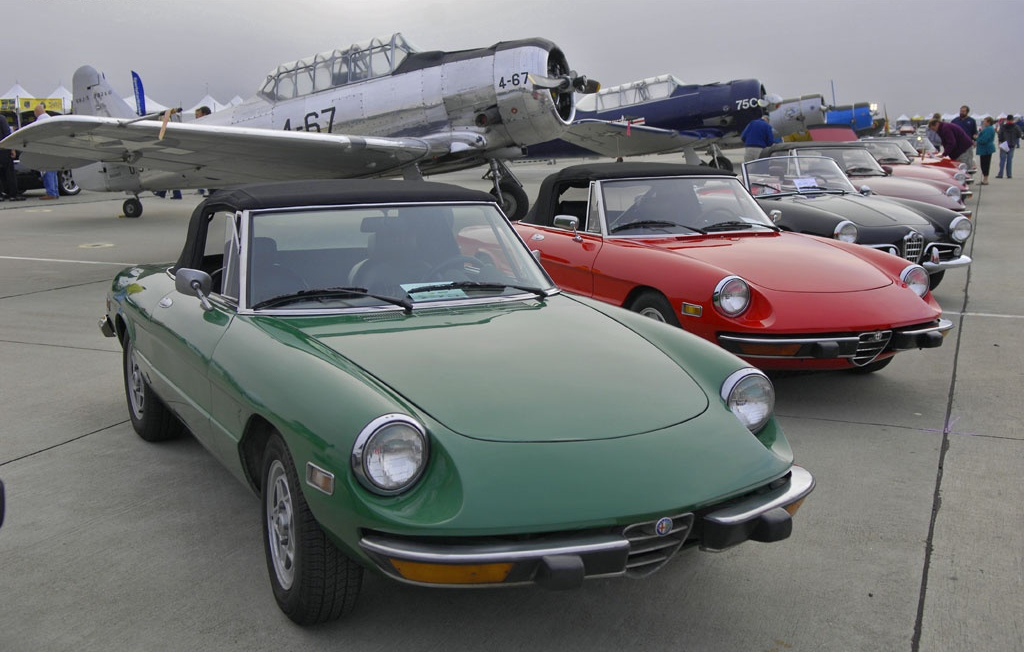
The Alfa Romeo Spider has always conjured up cinematic images, from Felini’s Giulias in the late 50s and 60s, to the iconic Duetto or “Ossi di Seppia” from The Graduate. Deservedly so, there are few things that conjure up La Dolce Vita the way a tops-down Alfa Romeo can. The aforementioned Giulia Spiders and Duettos are now highly coveted and have enjoyed consistent appreciation through even the leanest times. In 1970, the next generation of Spider, the “Kamm Tail” (squaring off the earlier 1750 Spider’s “boattail”), was introduced. Soon thereafter, the motor was enlarged to 1962 cc and the name was changed to 2000 Spider Veloce. A few years later, US DOT required impact-absorbing bumpers be added in order to continue sales in the US, which Alfa Romeo did with modest success until 1993. There were some styling modifications along the way, not always agreeable, but the Alfa Spider stayed true to its roots of a fun, affordable, sexy roadster. The most classic era of the Kamm Tail is the early period from 1970 to 1975, before the hideous black US bumpers marred its otherwise beautiful Pininfarina design. When combined with the more spirited motor, the 1972-75 Alfa Romeo Spider Veloce may be the next best thing to a Giulia or Boattail. There can be dozens of them on the market at any given time and many have indeed seen better days. The good news with the earlier cars is that some have been through an older restoration and, if well preserved, can be found in like new condition for about what a tired Miata will cost, making La Dolce Vita that much sweeter.

